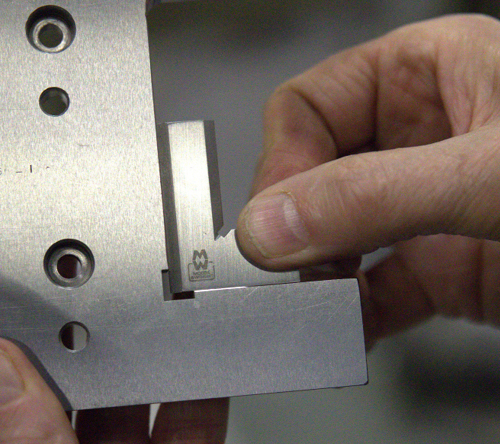Don't have an account?
Creating an account has many benefits: check out faster, keep more than one address, track orders and more.
Or
Checkout as a Guest
Place your order without creating an account for extra convenience.
Understanding Precision Squares: Types, Angles, and Materials
Contents
An introduction to Precison Squares
When it comes to precision measurement and layout in machining, metalworking, and engineering, few tools are as fundamental as the precision square. These tools ensure that surfaces, components, and assemblies are aligned correctly, typically at specific angles such as 90° or 45°. Choosing the right square can significantly impact accuracy and efficiency. Let’s explore the most commonly used types: machinist’s square, toolmaker’s square, combination square, and bevel edge square, including the angles they’re available in and the materials they’re made from.
Machinist's Square (or Engineer's Square)
Purpose:
Machinist's squares are used to check the squareness of machine components, tools, and workpieces. Essential in metalworking and mechanical applications.
Design:
A simple, solid "L" shape with a thick stock (handle) and a thin blade (beam). There are no moving parts.
Common Angles:
90° only (right angle)
Materials:
Hardened steel - Most common, durable, and stable
Granite - Used for ultra-precision work, often in inspection labs
Accuracy:
High-precision models are accurate to within 0.0002 inches over the blade length.
Combination Square
Purpose:
A combination square can be used in both metalworking and woodworking. Suitable for measuring, marking, and checking angles.
Design:
Consists of a ruler (blade) that slides into an interchangeable head. The most common head is a square head with a 90° and 45° face.
Common Angles:
90° and 45°
Some advanced heads may include protractor attachments allowing for variable angles (0°–180°)
Materials:
Stainless steel or hardened steel for the blade
Cast iron, steel, or zinc alloy for the head
Features:
Often includes a spirit level and a scribe (marking pin), making it extremely functional for layout tasks.
Bevel Edge Square
Purpose:
Bevel edge squares are primarily used in woodworking and cabinet making for checking internal angles and marking joints. Sometimes used in lighter engineering tasks.
Design:
A refined, elegant square with thinner blades and beveled edges to fit into tight corners or fine joints.
Common Angles:
Primarily 90°, though some adjustable versions can be set to other angles
Materials:
Hardened steel blades for durability
Rosewood, ebony, or brass used for handles in traditional styles
All-metal versions available for industrial use
Advantages:
Bevelled edges prevent debris from affecting measurements and make it easier to see the contact between the square and the material.
Material Comparison: Steel vs. Granite
| Property | Steel | Granite |
| Durability | Excellent, wear-resistant | Very stable, less prone to deformation |
| Corrosion | Can rust without proper care | Completely rust-proof |
| Thermal Stability | Expands with heat | Very low thermal expansion |
| Weight | Lighter, portable | Heavy, often used for stationary tools |
| Applications | Shop floor, general work | Precision labs, inspection rooms |
Final Thoughts
Precision squares may appear simple, but their role in ensuring accurate builds and precise components is irreplaceable. Whether you're squaring a workpiece, laying out a mortise, or inspecting a machined part, there's a square designed for the job.
Choosing the right square - based on the level of precision, material, and type of work - can make a world of difference in your workflow. Steel squares are a staple on the shop floor, while granite and high-precision toolmaker squares find their home in the inspection room. The combination square remains a favourite for its flexibility, and the bevel edge square excels were detail and finish matter most.
Cutwel has a huge range of precision squares. Please contact our technical team on 01924 869 615 or email sales@cutwel.net

